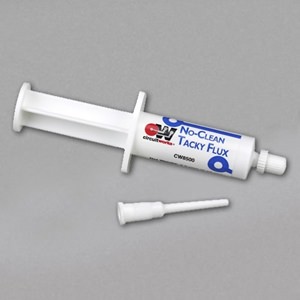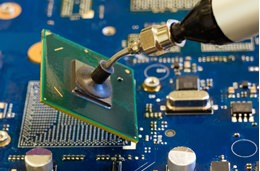CircuitWorks Tacky Flux
Conveniently packaged flux gel formulated for easy BGA rework
CircuitWorks® Tacky Flux is a Type ROL0 formulation designed for BGA rework requiring high-reliability, stability and cleanliness. CircuitWorks Tacky Flux gel composition holds the BGA component in position even with board movement. Its lower viscosity allows easy application and contains no ionic material. CircuitWorks Tacky Flux is suitable for clean room applications.
CircuitWorks Lead-Free Flux is very similar to No-Clean Tacky Flux, but specifically formulated for the higher temperature requirements of lead free applications.
Features & Benefits
- Syringe applicator provides exact delivery of flux to surface
- Long tack time, extended shelf life
- No refrigeration required
- Excellent consistency with stable viscosity
- Noncorrosive, halide and halogen free
- Meets IPC requirements for ROL0, No Clean
- Conforms to ISO 9454
- Meets Bellcore TR-NWT-000078 requirements
- Meets DIN EN 29454-1 1.1.3.C classification
- RoHS Compliant
Applications
- Automated BGA applications
| TDS | |
| REGS | |
| SDS | |
| Categories |
| Specifications |
ISO 9454, Bellcore TR-NWT-000078, DIN EN 29454-1 1.1.3.C Classification ANSI/IPC J STD-001, IPC-7711 |
|---|---|
| Shelf Life | 2 yrs. |





